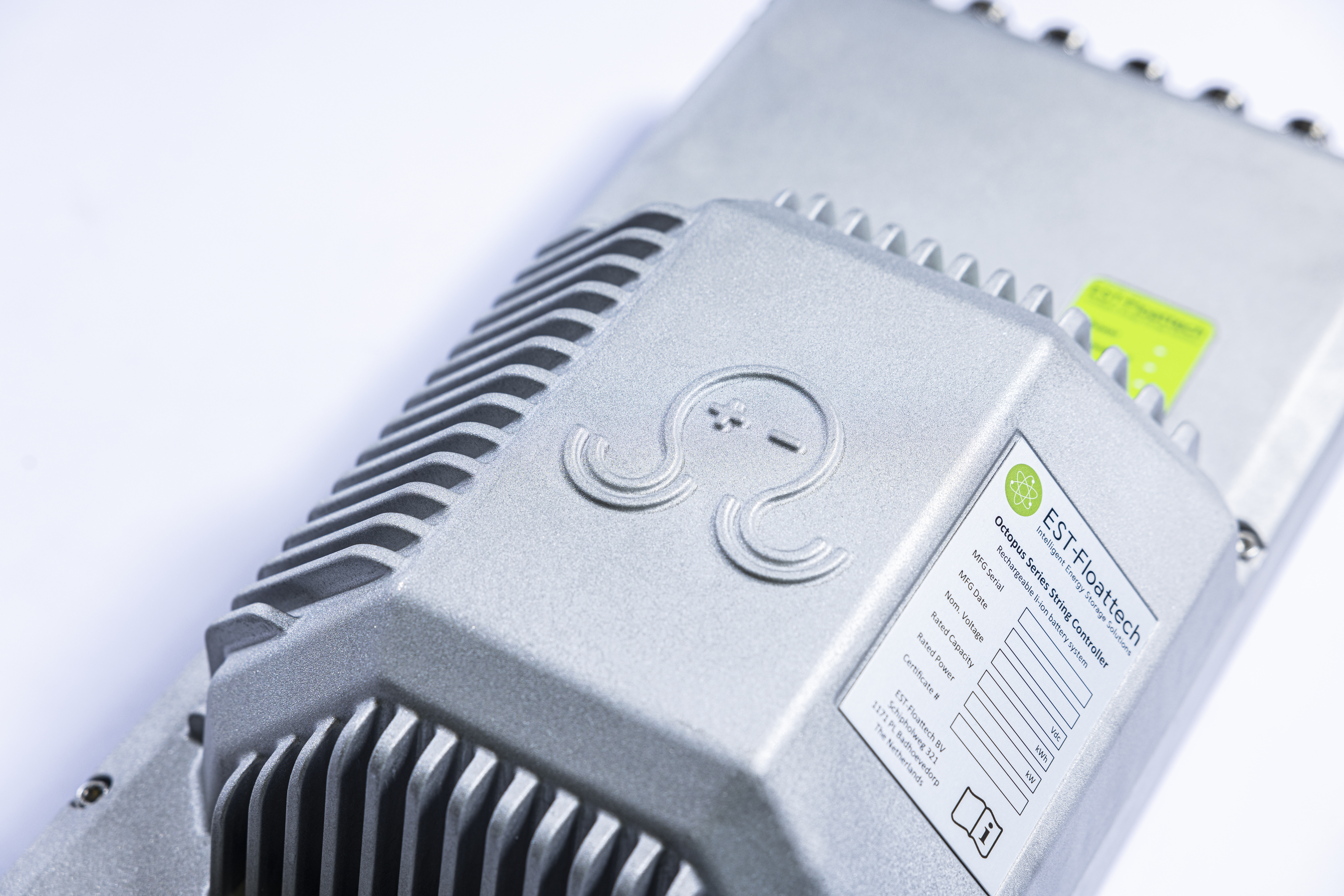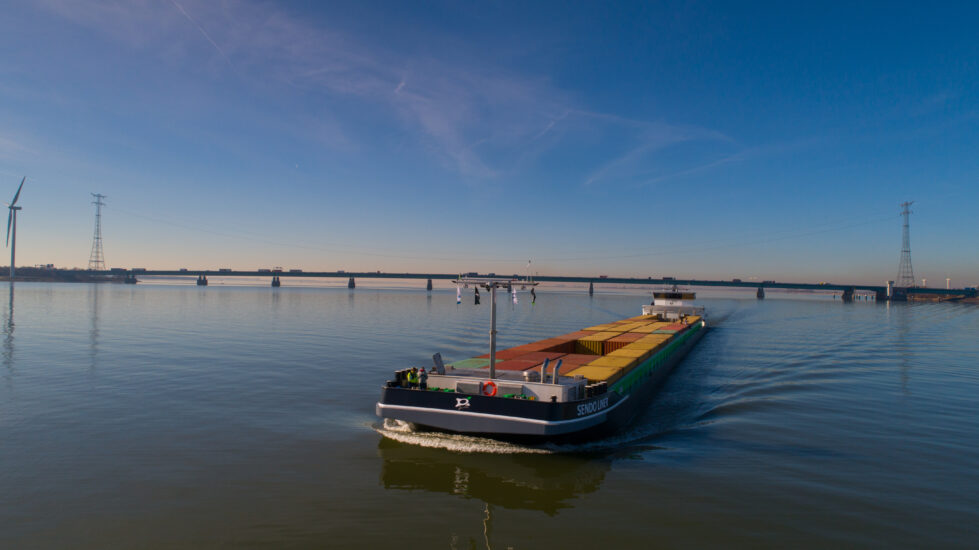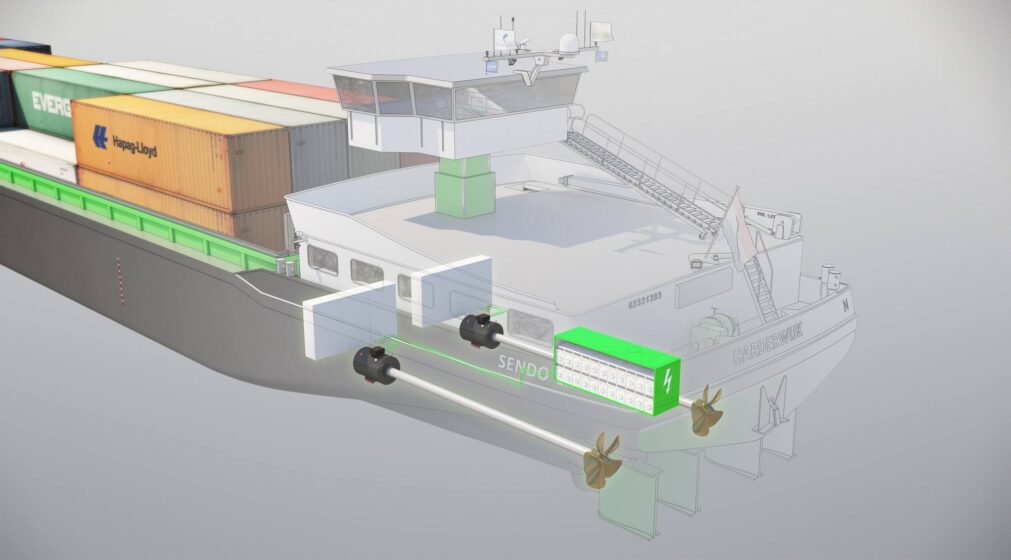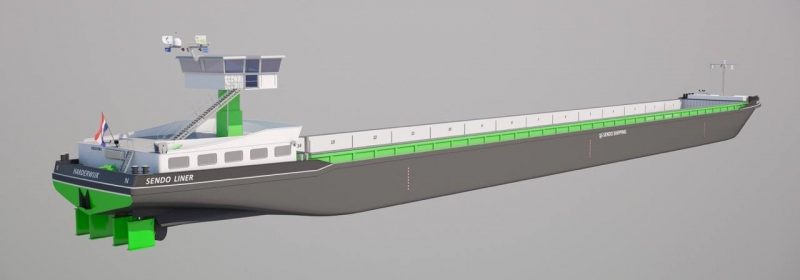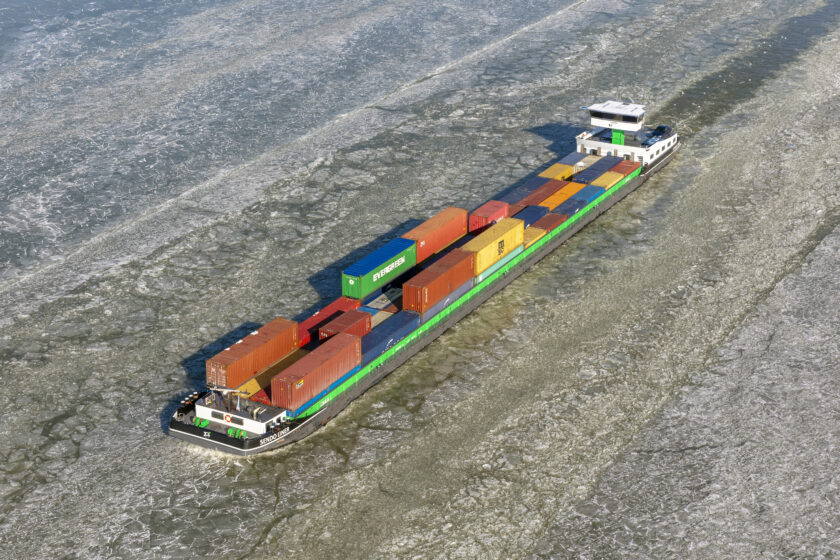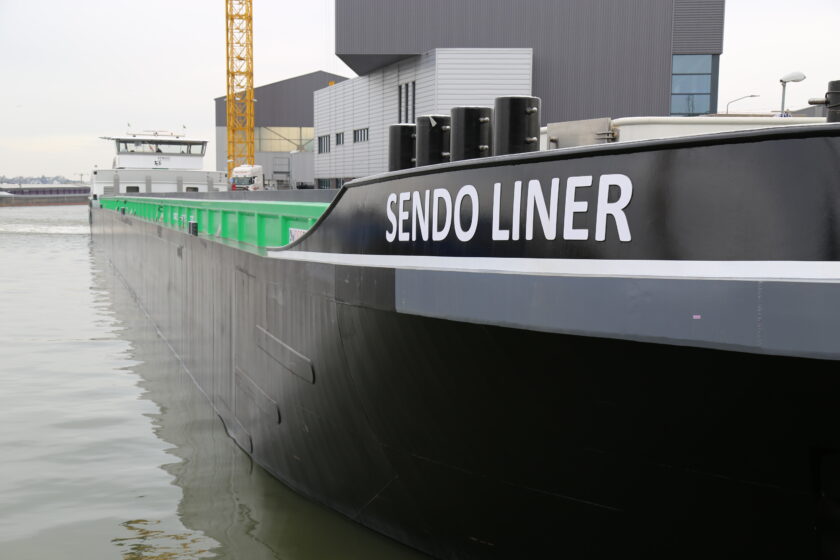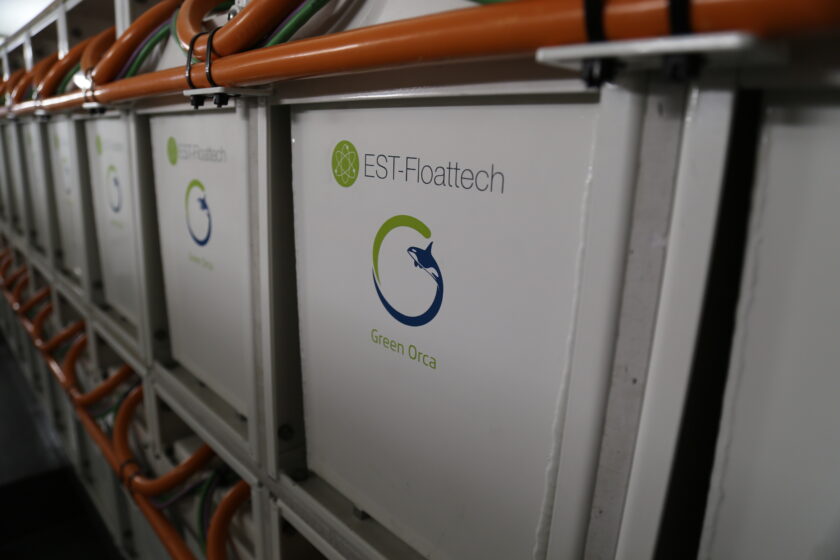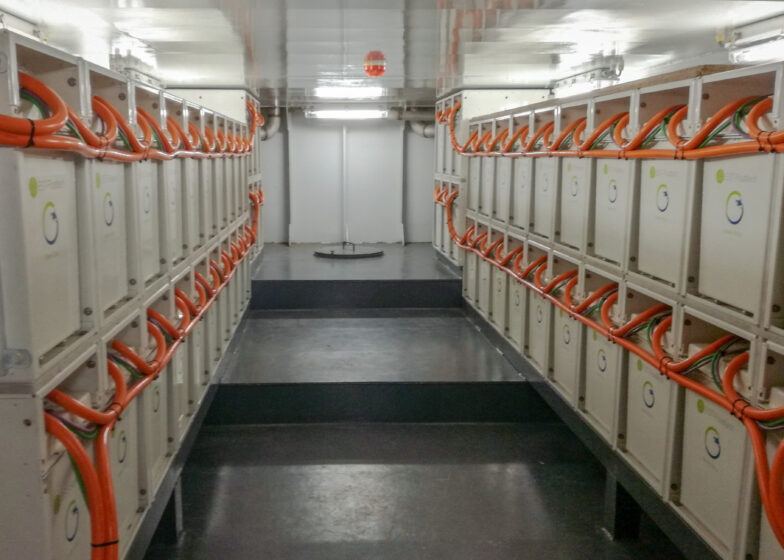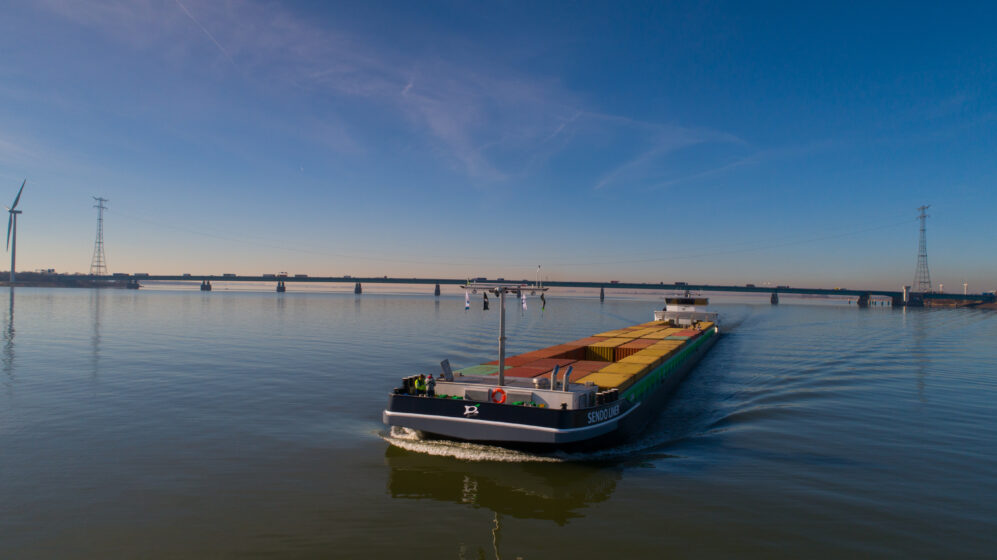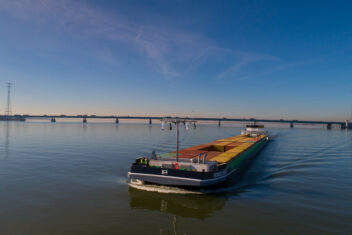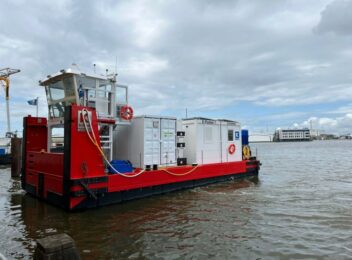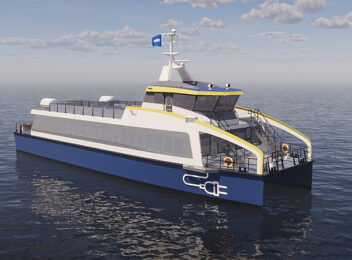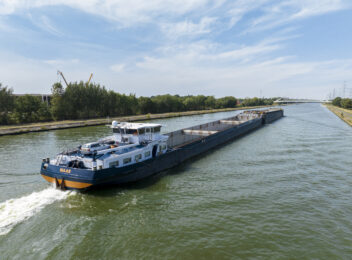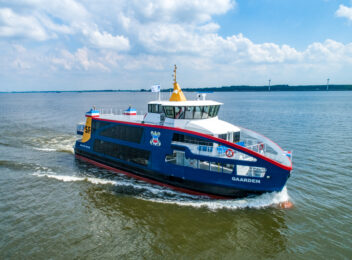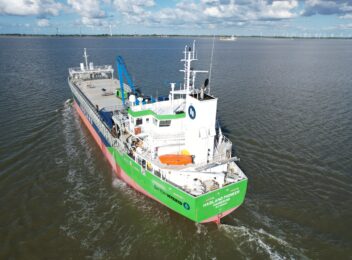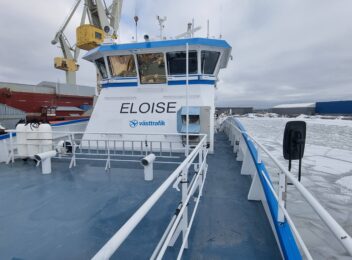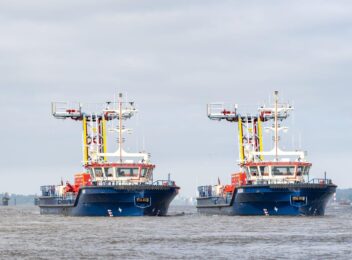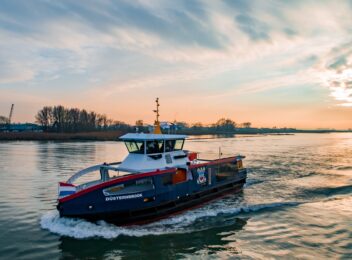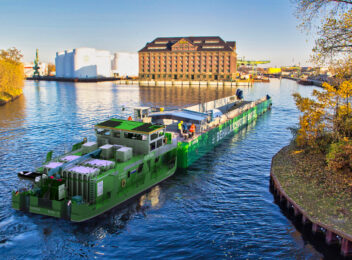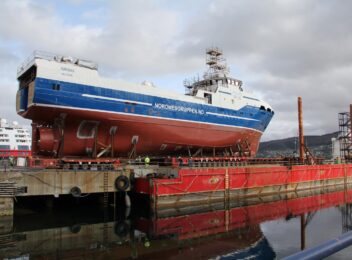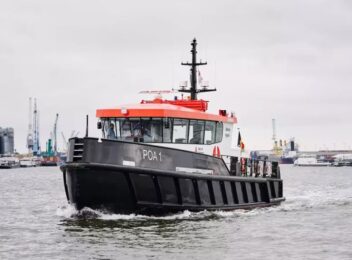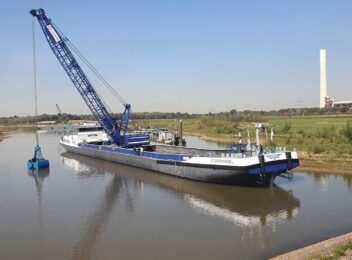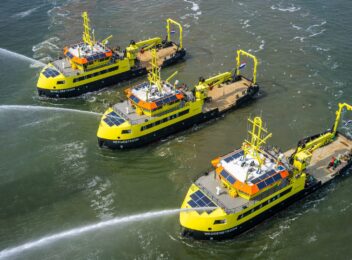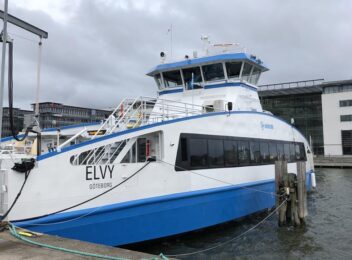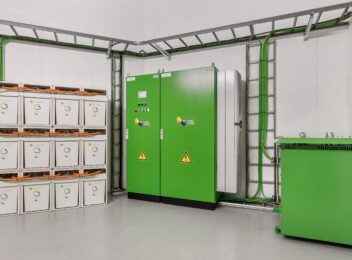“Sendo Liner”: world’s first emission-free container vessel
Low energy consumption thanks to our battery solution
The low level of energy consumption is due in part to a more efficient hull design. A new tunnel design improves the flow of water to the impellers. “That makes it possible to sail without emissions on battery power for up to three hours, at a speed of 13 kilometres per hour”, says Sebastian van der Meer, director at Sendo Shipping. “We can even run the entire route on a single generator when weather permits. The battery pack compensates for peak power demand.”
“That makes no-load power consumption a thing of the past. And when the vessel operates at normal power, any excess power can be used to charge the batteries. That helps reduce emissions and generator consumption under all operating conditions.”
The ship can sail a part of its route fully electrically powered. In addition, the vessel doesn’t have to use generator power while it’s waiting for locks to open or under a terminal crane, because the battery pack provides all the power the ship needs.
Customer benefits
Business plan without subsidy
Sendo Shipping did not apply for a subsidy for the development of the Sendo Liner or the purchase of the battery pack.
“We wanted to do this now, not in two years. In addition to the fact that subsidy applications are time-consuming and without guarantee of success, we’re convinced that low- or zero-emissions operations need to be achieved without public money. It’s possible to draw up a good business plan without subsidies, as long as you think about the details in a responsible way” says Van der Meer. “We’ve turned an efficient low-budget ship into an ultra-efficient state-of-the-art vessel.”
“The Sendo Liner uses 30% less energy than other 110-meter vessels and cuts energy consumption and CO2 emissions by 40% per TEU”, continues Sebastian van der Meer, Director at Sendo Shipping
Successor vessels “Sendo Mare” and “Sendo Nave”
Originally, Sendo Liner’s two sister vessels Sendo Mare and Sendo Nave were to sail with the aid of containerised battery technology. With that technology still under construction, Van der Meer decided to choose a similar battery solution as that of the Sendo Liner:
“We have designed a package with two strings of each seventeen modules, resulting in a capacity of 357 kWh. The vessels can sail fully electrical, but the extra battery power comes in handy, especially while manoeuvring. Soon we will be able to use one generator to sail 90 percent of the time with a vessel of 5,000 tons.”
Future-proof inland barge
According to Van der Meer, the electric system makes the ships more future-proof. “Once the interchangeable battery containers are fully developed, we can connect one directly to the system in order to sail emission-free for longer or maybe even all the time. In a few years, we might even be able to install a hydrogen fuel cell to provide the power.”
EST-Floattech is involved in these developments.
Sendo Liner, KNVTS ship of 2019
The Sendo Liner received the prestigious ‘Ship of the Year’ Award in 2019 and was praised by the jury for its innovative features and emission reductions.
